For the 2025 school year, there are 2 public middle schools serving 134 students in Fulton Schools School District. This district's average middle testing ranking is 3/10, which is in the bottom 50% of public middle schools in Michigan.
ÎÛÎÛÂþ» Middle Schools in Fulton Schools School District have an average math proficiency score of 17% (versus the Michigan public middle school average of 31%), and reading proficiency score of 27% (versus the 44% statewide average).
Minority enrollment is 10% of the student body (majority Hispanic), which is less than the Michigan public middle school average of 42% (majority Black).
Overview
This School District
This State (MI)
# Schools
4 Schools
1,349 Schools
# Students
546 Students
537,315 Students
# Teachers
35 Teachers
31,652 Teachers
Student : Teacher Ratio
16:1
16:1
District Rank
Fulton Schools School District, which is ranked within the bottom 50% of all 851 school districts in Michigan (based off of combined math and reading proficiency testing data) for the 2021-2022 school year.
The school district's graduation rate of 80-89% has increased from 50-54% over five school years.
Overall District Rank
#515 out of 866 school districts
(Bottom 50%)
(Bottom 50%)
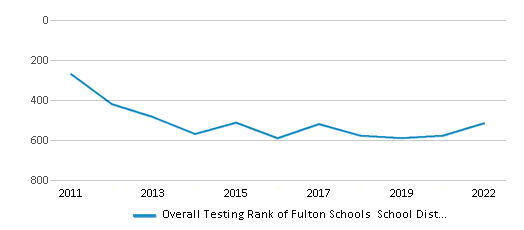
Math Test Scores (% Proficient)
24%
34%
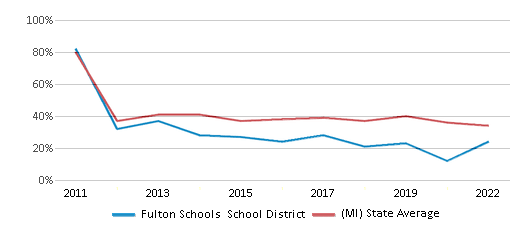
Reading/Language Arts Test Scores (% Proficient)
37%
45%
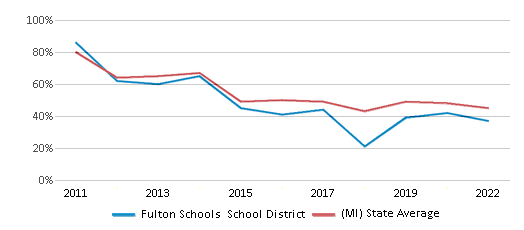
Science Test Scores (% Proficient)
25-29%
38%

Graduation Rate
80-89%
81%
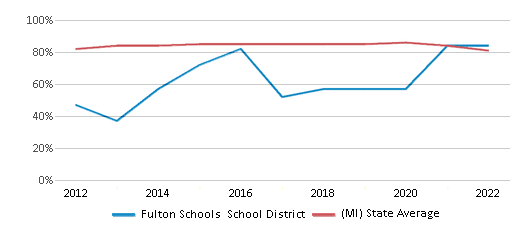
Students by Ethnicity:
Diversity Score
0.18
0.60
# American Indian Students
n/a
5,345 Students
% American Indian Students
n/a
1%
# Asian Students
2 Students
19,936 Students
% Asian Students
n/a
4%
# Hispanic Students
36 Students
47,905 Students
% Hispanic Students
7%
9%
# Black Students
2 Students
122,970 Students
% Black Students
n/a
23%
# White Students
495 Students
312,168 Students
% White Students
91%
58%
# Hawaiian Students
n/a
471 Students
% Hawaiian Students
n/a
n/a
# Two or more races Students
11 Students
27,717 Students
% of Two or more races Students
2%
5%
Students by Grade:
# Students in PK Grade:
-
-
# Students in K Grade:
52
17,744
# Students in 1st Grade:
40
17,631
# Students in 2nd Grade:
36
18,045
# Students in 3rd Grade:
48
17,646
# Students in 4th Grade:
40
18,813
# Students in 5th Grade:
42
26,385
# Students in 6th Grade:
41
87,228
# Students in 7th Grade:
40
103,285
# Students in 8th Grade:
51
102,692
# Students in 9th Grade:
42
33,855
# Students in 10th Grade:
42
31,157
# Students in 11th Grade:
42
30,339
# Students in 12th Grade:
30
30,343
# Ungraded Students:
-
2,152
District Revenue and Spending
The revenue/student of $16,943 in this school district is less than the state median of $18,510. The school district revenue/student has grown by 11% over four school years.
The school district's spending/student of $16,967 is less than the state median of $17,693. The school district spending/student has grown by 11% over four school years.
Total Revenue
$9 MM
$25,476 MM
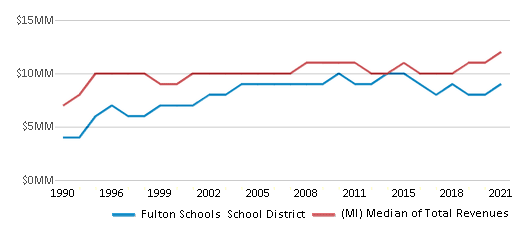
Spending
$9 MM
$24,351 MM
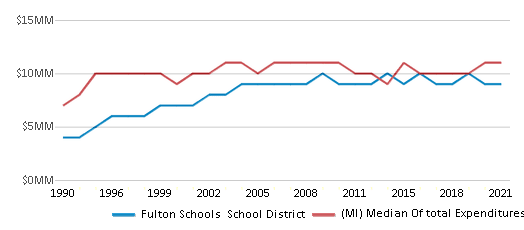
Revenue / Student
$16,943
$18,510
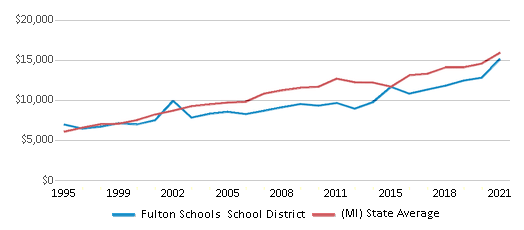
Spending / Student
$16,967
$17,693
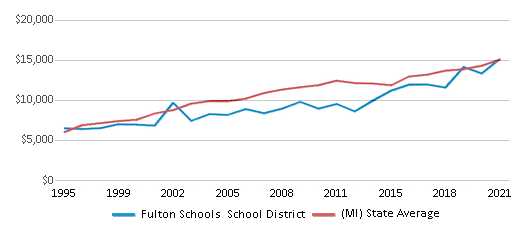
Best Fulton Schools School District ÎÛÎÛÂþ» Middle Schools (2025)
School
(Math and Reading Proficiency)
(Math and Reading Proficiency)
Location
Grades
Students
Rank: #11.
Fulton Middle School
(Math: 15-19% | Reading: 25-29%)
Rank:
Rank:
3/
Bottom 50%10
8060 Ely Hwy
Middleton, MI 48856
(989) 236-7232
Middleton, MI 48856
(989) 236-7232
Grades: 6-8
| 132 students
Rank: #22.
Fulton Alternative Education
Alternative School
(Math: ≤10% | Reading: ≤10% )
Rank:
Rank:
3/
Bottom 50%10
129 East George St
Middleton, MI 48856
(989) 236-7300
Middleton, MI 48856
(989) 236-7300
Grades: 7-12
| 2 students
Recent Articles

Year-Round Or Traditional Schedule?
Which is more appropriate for your child? A year-round attendance schedule or traditional schedule? We look at the pros and cons.

Why You Should Encourage Your Child to Join a Sports Team
Participating in team sports has a great many benefits for children, there is no doubt. In this article you will learn what those benefits are.

White Students are Now the Minority in U.S. ÎÛÎÛÂþ» Schools
Increasing birth rates among immigrant families from Asia and Central and South America, combined with lower birth rates among white families, means that for the first time in history, public school students in the United States are majority-minority. This shift in demographics poses difficulties for schools as they work to accommodate children of varying language abilities and socio-economic backgrounds.





